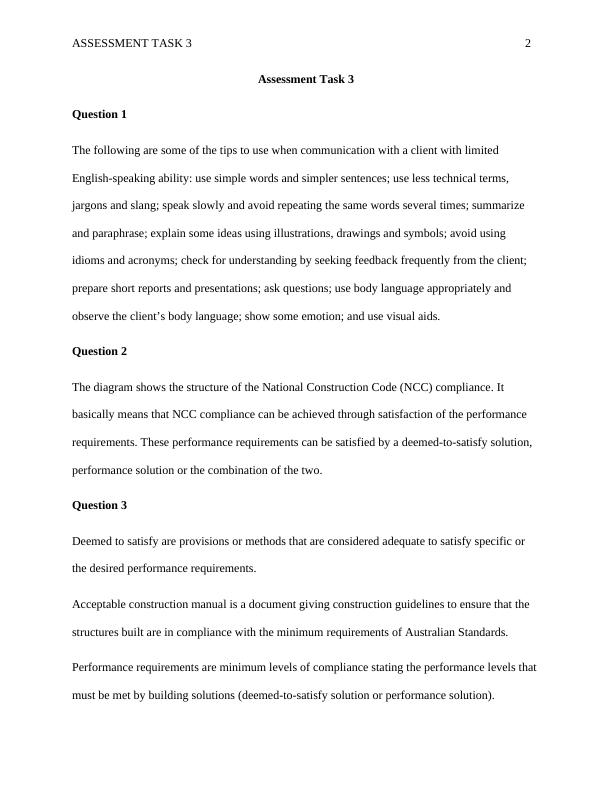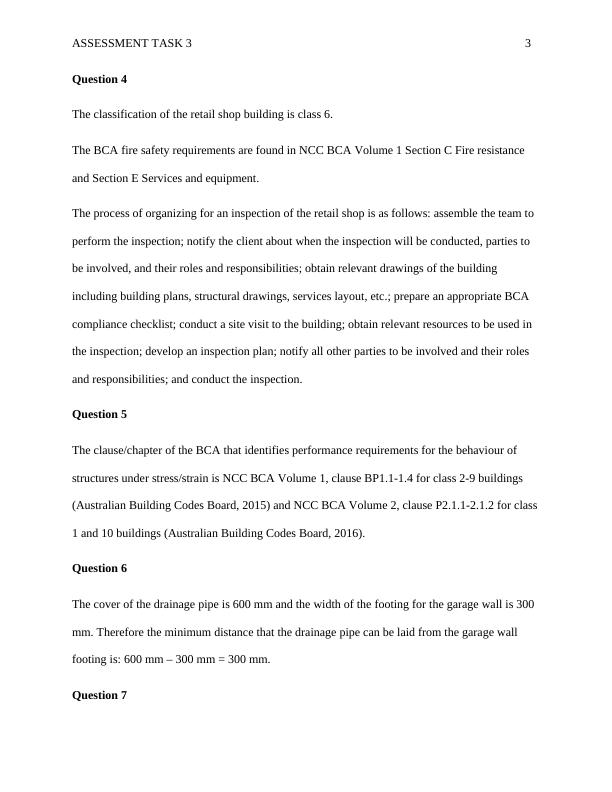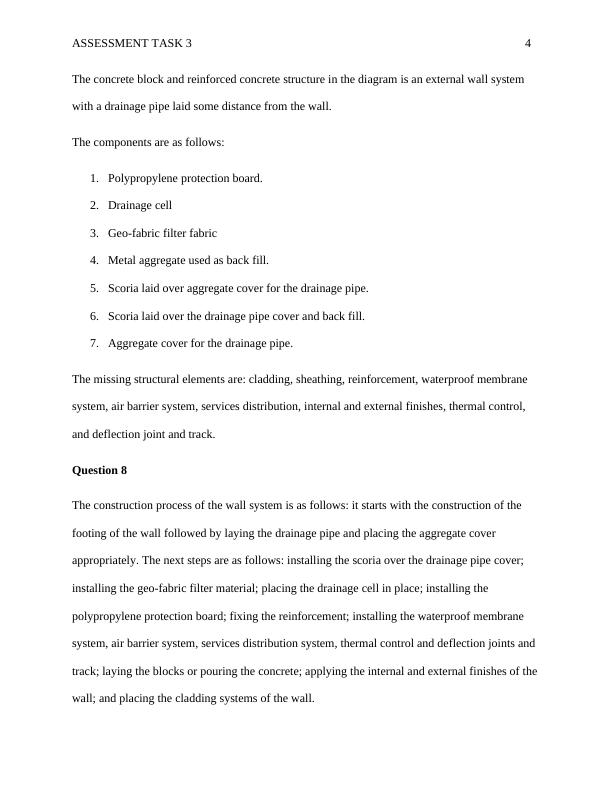Tips for Communication with Limited English-speaking Clients
Added on 2023-04-20
16 Pages4269 Words264 Views
Running head: ASSESSMENT TASK 3
ASSESSMENT TASK 3
Name
Course
Professor
University
City/state
Date
ASSESSMENT TASK 3
Name
Course
Professor
University
City/state
Date

ASSESSMENT TASK 3 2
Assessment Task 3
Question 1
The following are some of the tips to use when communication with a client with limited
English-speaking ability: use simple words and simpler sentences; use less technical terms,
jargons and slang; speak slowly and avoid repeating the same words several times; summarize
and paraphrase; explain some ideas using illustrations, drawings and symbols; avoid using
idioms and acronyms; check for understanding by seeking feedback frequently from the client;
prepare short reports and presentations; ask questions; use body language appropriately and
observe the client’s body language; show some emotion; and use visual aids.
Question 2
The diagram shows the structure of the National Construction Code (NCC) compliance. It
basically means that NCC compliance can be achieved through satisfaction of the performance
requirements. These performance requirements can be satisfied by a deemed-to-satisfy solution,
performance solution or the combination of the two.
Question 3
Deemed to satisfy are provisions or methods that are considered adequate to satisfy specific or
the desired performance requirements.
Acceptable construction manual is a document giving construction guidelines to ensure that the
structures built are in compliance with the minimum requirements of Australian Standards.
Performance requirements are minimum levels of compliance stating the performance levels that
must be met by building solutions (deemed-to-satisfy solution or performance solution).
Assessment Task 3
Question 1
The following are some of the tips to use when communication with a client with limited
English-speaking ability: use simple words and simpler sentences; use less technical terms,
jargons and slang; speak slowly and avoid repeating the same words several times; summarize
and paraphrase; explain some ideas using illustrations, drawings and symbols; avoid using
idioms and acronyms; check for understanding by seeking feedback frequently from the client;
prepare short reports and presentations; ask questions; use body language appropriately and
observe the client’s body language; show some emotion; and use visual aids.
Question 2
The diagram shows the structure of the National Construction Code (NCC) compliance. It
basically means that NCC compliance can be achieved through satisfaction of the performance
requirements. These performance requirements can be satisfied by a deemed-to-satisfy solution,
performance solution or the combination of the two.
Question 3
Deemed to satisfy are provisions or methods that are considered adequate to satisfy specific or
the desired performance requirements.
Acceptable construction manual is a document giving construction guidelines to ensure that the
structures built are in compliance with the minimum requirements of Australian Standards.
Performance requirements are minimum levels of compliance stating the performance levels that
must be met by building solutions (deemed-to-satisfy solution or performance solution).

ASSESSMENT TASK 3 3
Question 4
The classification of the retail shop building is class 6.
The BCA fire safety requirements are found in NCC BCA Volume 1 Section C Fire resistance
and Section E Services and equipment.
The process of organizing for an inspection of the retail shop is as follows: assemble the team to
perform the inspection; notify the client about when the inspection will be conducted, parties to
be involved, and their roles and responsibilities; obtain relevant drawings of the building
including building plans, structural drawings, services layout, etc.; prepare an appropriate BCA
compliance checklist; conduct a site visit to the building; obtain relevant resources to be used in
the inspection; develop an inspection plan; notify all other parties to be involved and their roles
and responsibilities; and conduct the inspection.
Question 5
The clause/chapter of the BCA that identifies performance requirements for the behaviour of
structures under stress/strain is NCC BCA Volume 1, clause BP1.1-1.4 for class 2-9 buildings
(Australian Building Codes Board, 2015) and NCC BCA Volume 2, clause P2.1.1-2.1.2 for class
1 and 10 buildings (Australian Building Codes Board, 2016).
Question 6
The cover of the drainage pipe is 600 mm and the width of the footing for the garage wall is 300
mm. Therefore the minimum distance that the drainage pipe can be laid from the garage wall
footing is: 600 mm – 300 mm = 300 mm.
Question 7
Question 4
The classification of the retail shop building is class 6.
The BCA fire safety requirements are found in NCC BCA Volume 1 Section C Fire resistance
and Section E Services and equipment.
The process of organizing for an inspection of the retail shop is as follows: assemble the team to
perform the inspection; notify the client about when the inspection will be conducted, parties to
be involved, and their roles and responsibilities; obtain relevant drawings of the building
including building plans, structural drawings, services layout, etc.; prepare an appropriate BCA
compliance checklist; conduct a site visit to the building; obtain relevant resources to be used in
the inspection; develop an inspection plan; notify all other parties to be involved and their roles
and responsibilities; and conduct the inspection.
Question 5
The clause/chapter of the BCA that identifies performance requirements for the behaviour of
structures under stress/strain is NCC BCA Volume 1, clause BP1.1-1.4 for class 2-9 buildings
(Australian Building Codes Board, 2015) and NCC BCA Volume 2, clause P2.1.1-2.1.2 for class
1 and 10 buildings (Australian Building Codes Board, 2016).
Question 6
The cover of the drainage pipe is 600 mm and the width of the footing for the garage wall is 300
mm. Therefore the minimum distance that the drainage pipe can be laid from the garage wall
footing is: 600 mm – 300 mm = 300 mm.
Question 7

ASSESSMENT TASK 3 4
The concrete block and reinforced concrete structure in the diagram is an external wall system
with a drainage pipe laid some distance from the wall.
The components are as follows:
1. Polypropylene protection board.
2. Drainage cell
3. Geo-fabric filter fabric
4. Metal aggregate used as back fill.
5. Scoria laid over aggregate cover for the drainage pipe.
6. Scoria laid over the drainage pipe cover and back fill.
7. Aggregate cover for the drainage pipe.
The missing structural elements are: cladding, sheathing, reinforcement, waterproof membrane
system, air barrier system, services distribution, internal and external finishes, thermal control,
and deflection joint and track.
Question 8
The construction process of the wall system is as follows: it starts with the construction of the
footing of the wall followed by laying the drainage pipe and placing the aggregate cover
appropriately. The next steps are as follows: installing the scoria over the drainage pipe cover;
installing the geo-fabric filter material; placing the drainage cell in place; installing the
polypropylene protection board; fixing the reinforcement; installing the waterproof membrane
system, air barrier system, services distribution system, thermal control and deflection joints and
track; laying the blocks or pouring the concrete; applying the internal and external finishes of the
wall; and placing the cladding systems of the wall.
The concrete block and reinforced concrete structure in the diagram is an external wall system
with a drainage pipe laid some distance from the wall.
The components are as follows:
1. Polypropylene protection board.
2. Drainage cell
3. Geo-fabric filter fabric
4. Metal aggregate used as back fill.
5. Scoria laid over aggregate cover for the drainage pipe.
6. Scoria laid over the drainage pipe cover and back fill.
7. Aggregate cover for the drainage pipe.
The missing structural elements are: cladding, sheathing, reinforcement, waterproof membrane
system, air barrier system, services distribution, internal and external finishes, thermal control,
and deflection joint and track.
Question 8
The construction process of the wall system is as follows: it starts with the construction of the
footing of the wall followed by laying the drainage pipe and placing the aggregate cover
appropriately. The next steps are as follows: installing the scoria over the drainage pipe cover;
installing the geo-fabric filter material; placing the drainage cell in place; installing the
polypropylene protection board; fixing the reinforcement; installing the waterproof membrane
system, air barrier system, services distribution system, thermal control and deflection joints and
track; laying the blocks or pouring the concrete; applying the internal and external finishes of the
wall; and placing the cladding systems of the wall.

End of preview
Want to access all the pages? Upload your documents or become a member.
Related Documents
National Construction Code (NCC) Assignmentlg...
|12
|2838
|1168
CPCCBC4001A Apply Building Codes and Standards Assessment 1lg...
|6
|1608
|413
Building And Construction Assignmentlg...
|5
|905
|75
BCA Assessment Report for Commercial Development at Singlewell Road, Lake Macquarielg...
|18
|2906
|97
Fire Safety and Compliancelg...
|9
|2346
|59
Deemed–to–Satisfy (DTS) | Task Reportlg...
|18
|2585
|18
